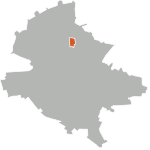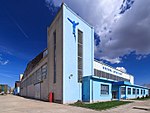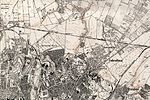Aurel Vlaicu metro station
1987 establishments in RomaniaBucharest Metro stationsEuropean rapid transit stubsRailway stations opened in 1987Romania transport stubs ... and 1 more
Romanian railway station stubs

Aurel Vlaicu is a metro station in the north of Bucharest, named after the Romanian aeroplane constructor and pioneer aviator, Aurel Vlaicu. It lies on the western end of the Pipera industrial platform, close to an intersection of three boulevards. The station was opened on 24 October 1987 as part of the extension from Piața Unirii to Pipera. There are plans to add a permanent exhibition to the platform, in hommage to the life of Romanian aviation pioneer Aurel Vlaicu.
Excerpt from the Wikipedia article Aurel Vlaicu metro station (License: CC BY-SA 3.0, Authors, Images).Aurel Vlaicu metro station
Pista biciclete Sos. Pipera, Bucharest Aviației (Sector 1)
Geographical coordinates (GPS) Address Nearby Places Show on map
Geographical coordinates (GPS)
| Latitude | Longitude |
|---|---|
| N 44.47917 ° | E 26.10019 ° |
Address
Aurel Vlaicu
Pista biciclete Sos. Pipera
014262 Bucharest, Aviației (Sector 1)
Romania
Open on Google Maps






